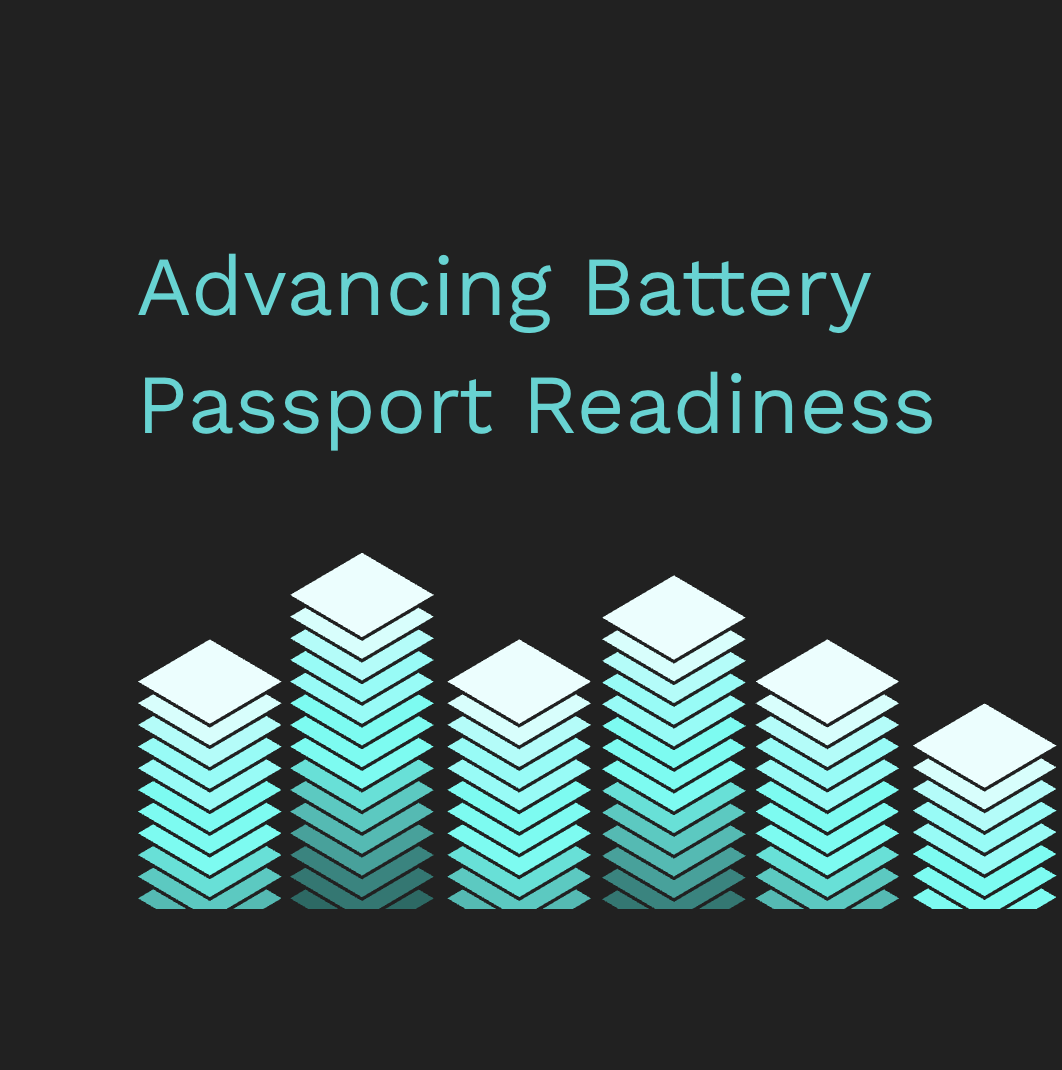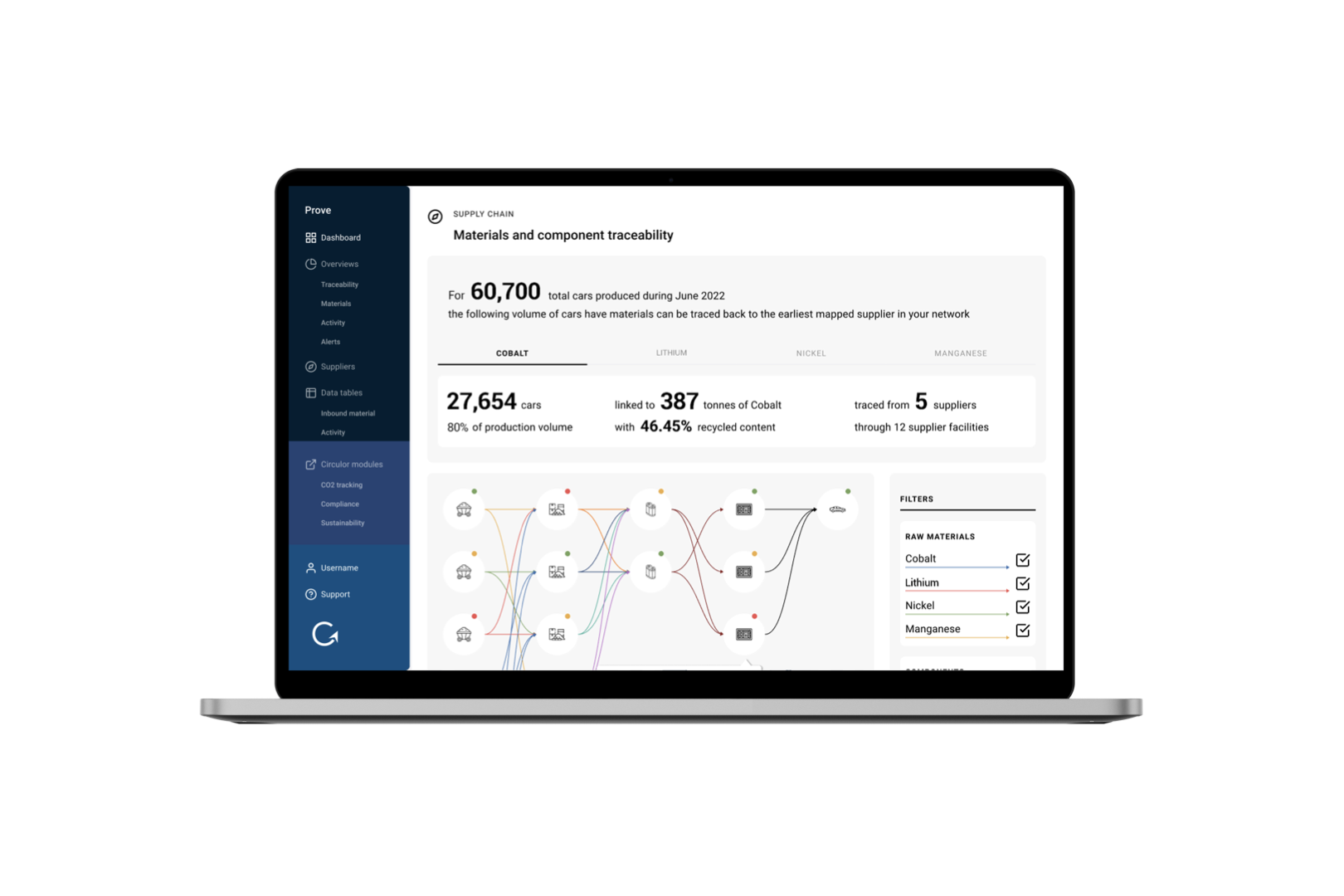
13.05.2022
Webinars
Traceability is the bedrock to transparent, sustainable and secure supply chains
Following a recent talk on the topic, Circulor CEO Doug Johnson-Poensgen explains how material traceability forms the foundation of transparent and secure supply chains.
The Battery Pass consortium, of which Circulor is a member, recently reached an important milestone, as it officially launched the first publicly available content guidance on the EU Battery Passport. The guidance is specifically designed to support the implementation of the battery passport in line with the requirements of the upcoming EU Battery Regulation in a way that is feasible for industrial players and enables sustainability and circularity.
We have all been talking about the EU Battery Regulation for quite some time now, which mandates that, from 2027 onwards, battery passports will be required to share information on the origin and production journey of materials, embedded emissions, ethical and responsible sourcing, percentage of recycled content, and state of health and lifecycle management.
The U.S. is quickly catching-up through the introduction of the Clean Vehicle Tax Credit, which requires automakers and battery manufacturers to demonstrate that critical minerals and battery components are sourced and produced in the U.S. or free trade agreement countries. Unsurprisingly, there have been a lot of questions about how compliance can be achieved: it is certainly no small task, albeit a very necessary one.
And supply chain regulations are not reserved solely for batteries. Policies like the Uyghur Forced Labor Prevention Action, of which there are a growing number, affect a variety of industries and clearly illustrate that knowing where our things are made is a global regulatory theme.
The answer to increased scrutiny on supply chain activity comes down to traceability. In the last six years, Circulor has built technology solutions that create a digital thread capable of following materials from their origin through processing and manufacturing to final product. In the end, the final product has a digital identity that shares the source, journey, and ESG activity of the materials it contains.
Circulor CEO Doug Johnson-Poensgen at SAFE Summit 2023
What is traceability and how does it work?
The first step in creating this digital thread through supply chains requires creating a reliable digital twin for a physical commodity at its source, and then tracking the material as it changes state within manufacturing and recycling processes. This means businesses can follow the physical flow of critical materials from extraction to final production, as well as associated ESG characteristics and embedded carbon across Scope 1, 2, and 3 emissions. It’s key that this is done digitally through industrial IoT applications – leaving no room for human error or manipulation. For example, we use biometrics to confirm that people at mine sites are legitimate actors within the process, and all the equipment used, such as weighing plates and handheld mass spectrometers, produce data wirelessly. This removes many of the paper-based traceability challenges, such as when a worker is bribed to change the weight, water content or grade of a material on a form.
Ultimately, to be confident in the provenance of the end product, you need to be confident in the data that has been input at every stage of the supply chain, and this is where blockchain comes in. The notarization of transactions, and the timestamping of those transactions, is crucial when it can take many months for a raw material to make its journey from mine to car: you need to make sure history can’t be re-written. In other situations, a distributed ledger is an exceptionally inefficient way to store information if you want to make sense of it. However, when you combine a distributed ledger with traditional databases, such as Oracle, and apply business logic to that data in order to identify anomalies and look for connections, you can achieve something not possible even five years ago.
Collating and linking all of this data provides a chain of custody – and this is only the starting point. When you have visibility of what actor touched what, when, and where, you can calculate where the economic value-add happened, attach an attributable slice of scope 1 and 2 carbon emissions from each participant in the supply chain to that physical flow of materials, and capture information on human rights.
What are the tangible results?
This is not pie in the sky thinking. A number of automakers are doing this and already attaching “battery passports” or “digital battery identifiers” to vehicles rolling off production lines today.
Our customer Polestar reported a 6% reduction in emissions produced in manufacturing per vehicle in its first sustainability report, published last year. And they reported another 8% reduction per car this year. They achieved this purely by buying smarter, because our solution showed them what they were inheriting from their supply chain.
We are also seeing traceability come into its own when it comes to the agreement of supply deals. For example, if an OEM is going to agree to a direct supply deal for a more sustainably produced material—and pay more for said material—then they need assurance that they are indeed getting what they paid for, and that midstream participants haven’t been able to operate unsustainably, irresponsibly, or substitute materials. Traceability provides the proof.
What can you do next?
Supply chain fraud is, and has been, an ever-present threat that cannot be ignored, and the digitization of the deeper tiers of supply chains is now not only possible but also a business imperative. There’s only a short time until the requirements of the EU Battery Regulation and the Clean Vehicle Tax Credit take full effect, so companies wanting to gain a competitive advantage and demonstrate their commitment to sustainable and responsible production should act now to establish full supply chain traceability.
While unlocking the opportunities for transparent and secure supply chains in Europe and the U.S. won’t be easy, the significant progress made to-date shows the potential to the rest of the world how the clean energy economy can be built responsibly and sustainably.





![Acculon RA Circulor - website image.001[44].png](/_next/image?url=https%3A%2F%2Fdecisive-wonder-fa24533282.media.strapiapp.com%2FAcculon_RA_Circulor_website_image_001_44_2720fb315d.png&w=1920&q=75)




